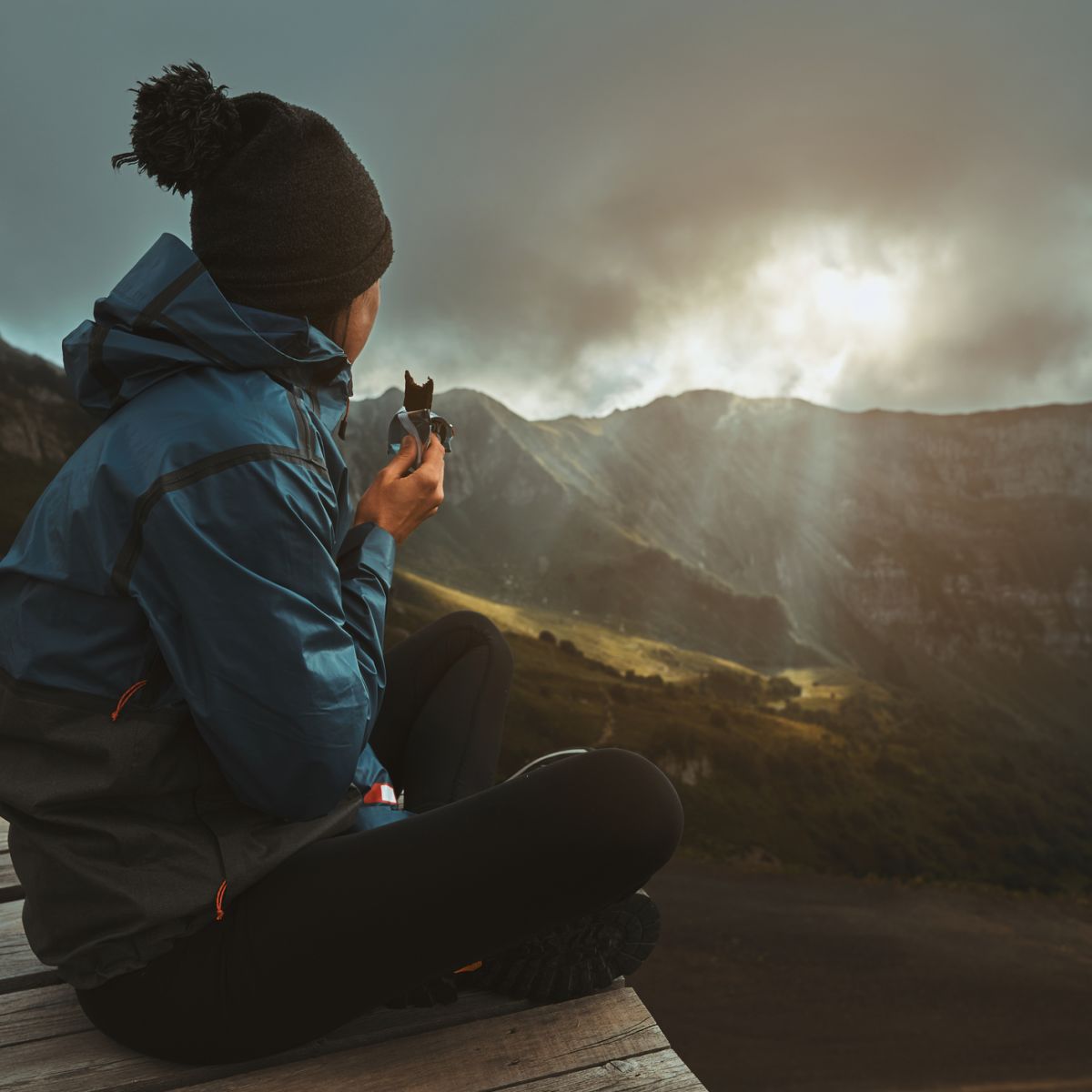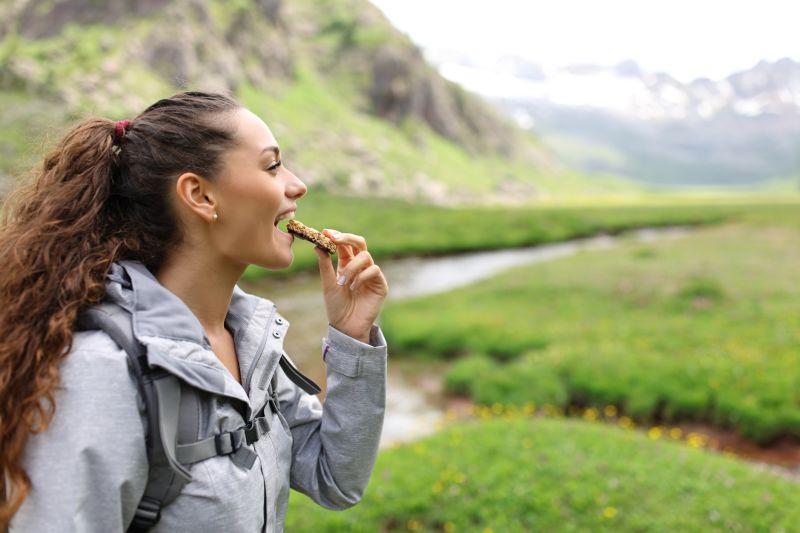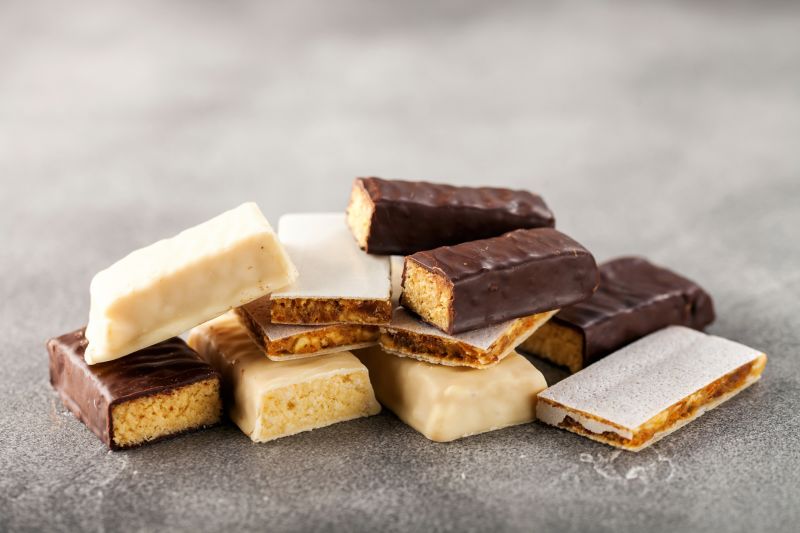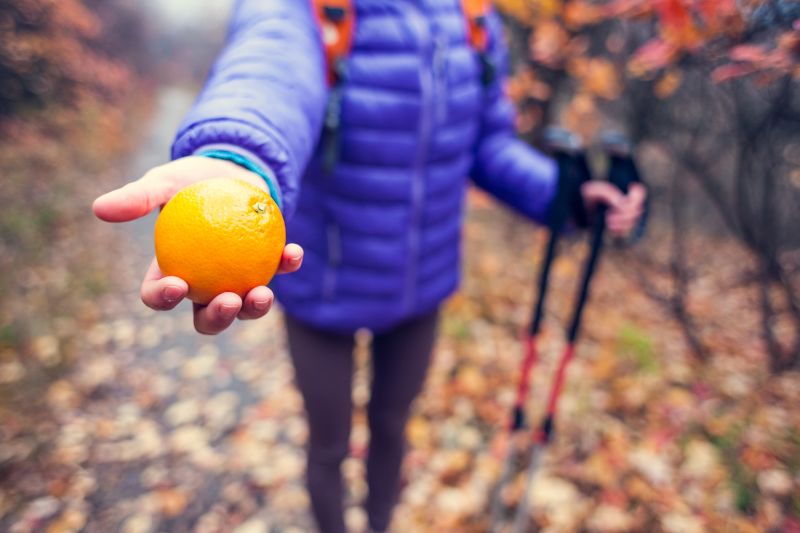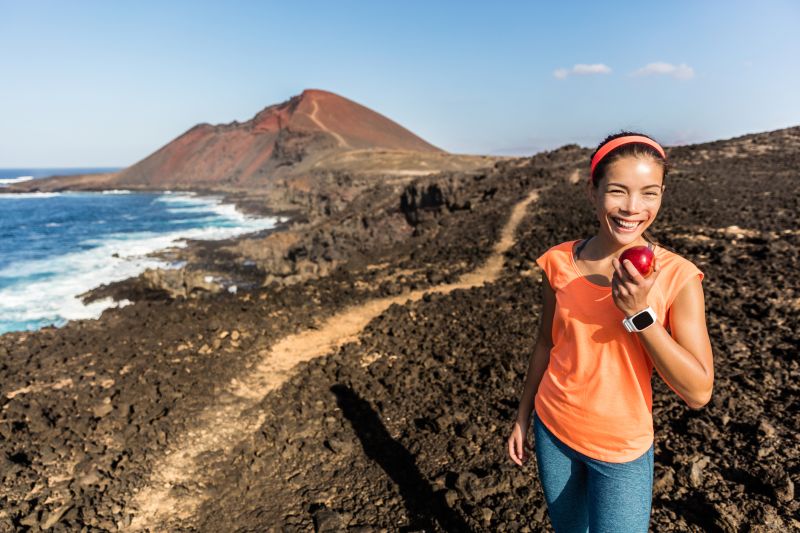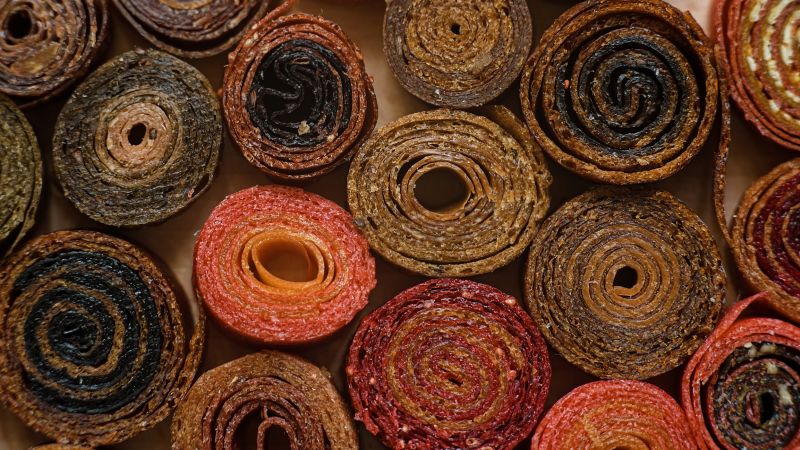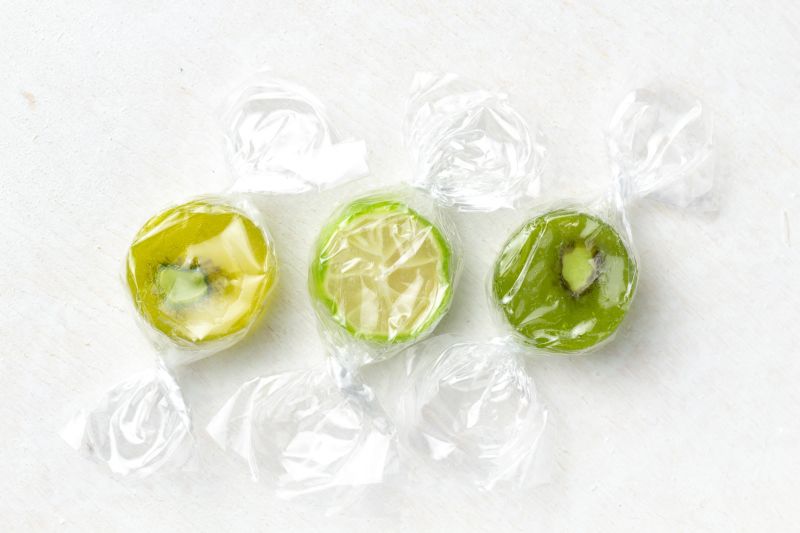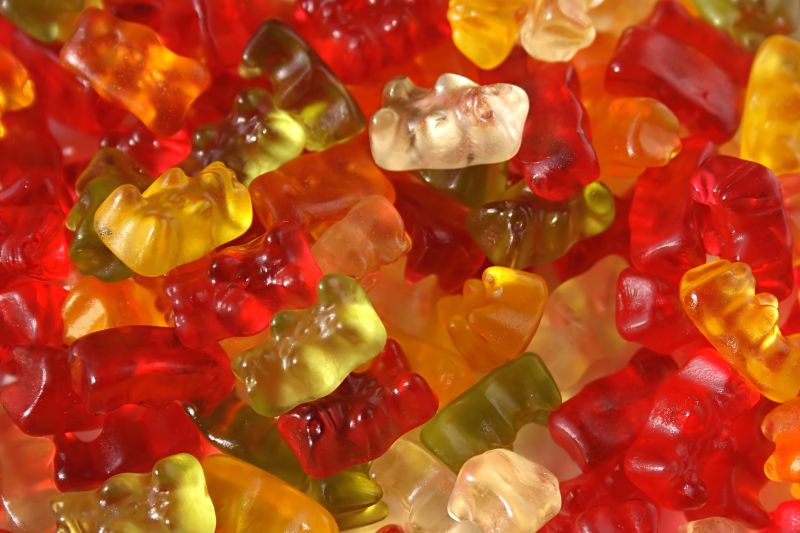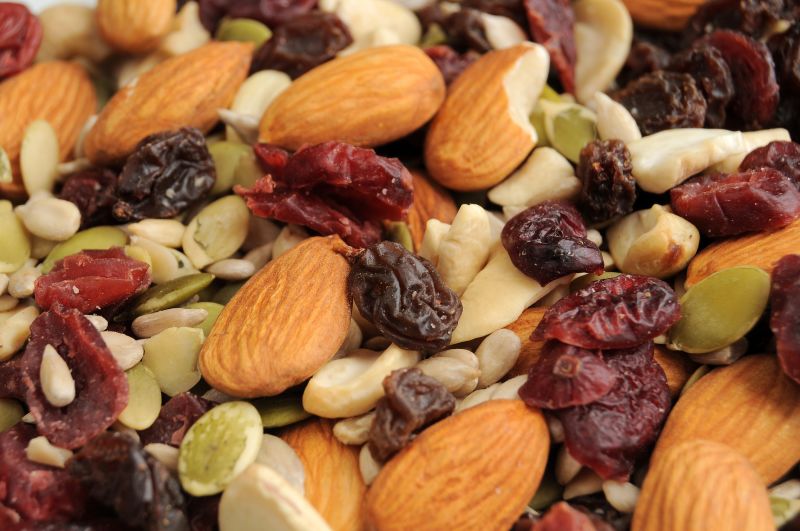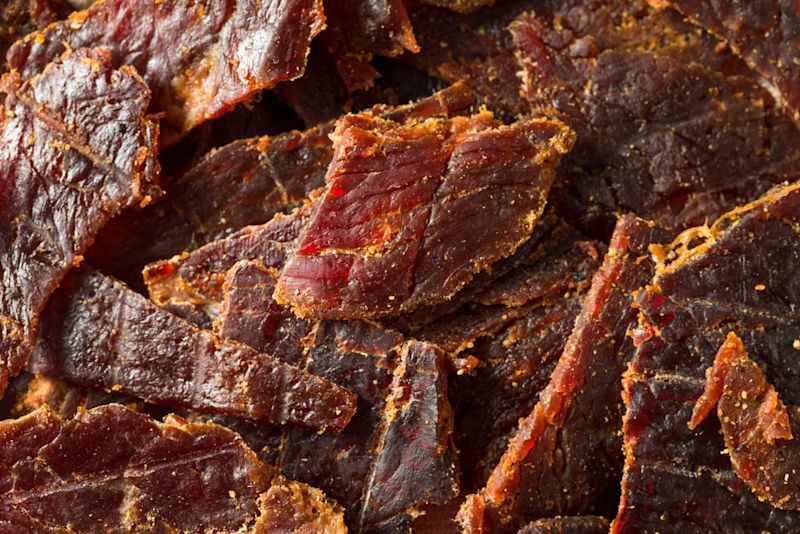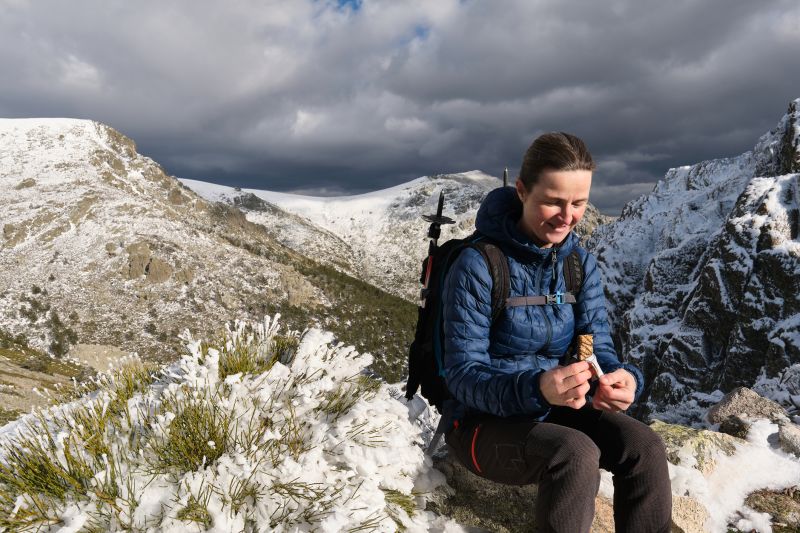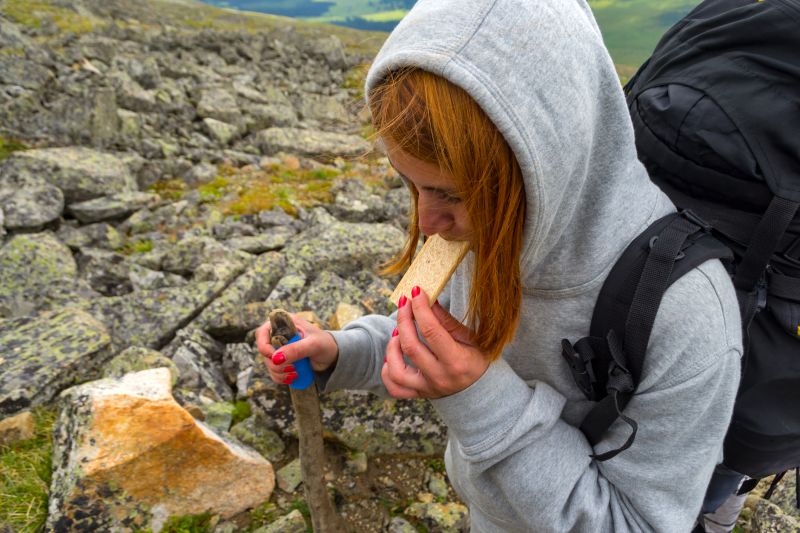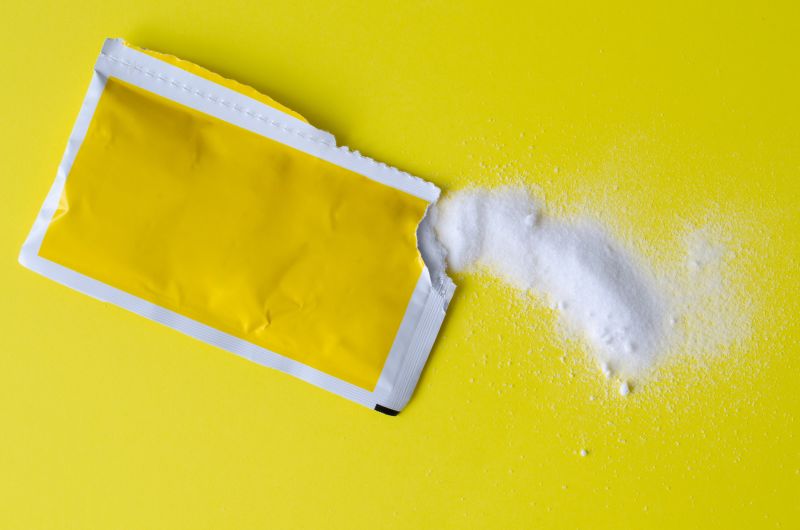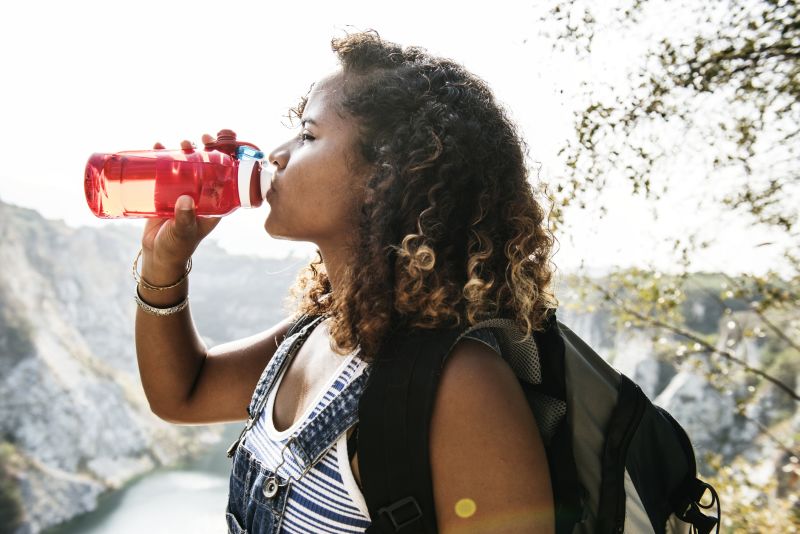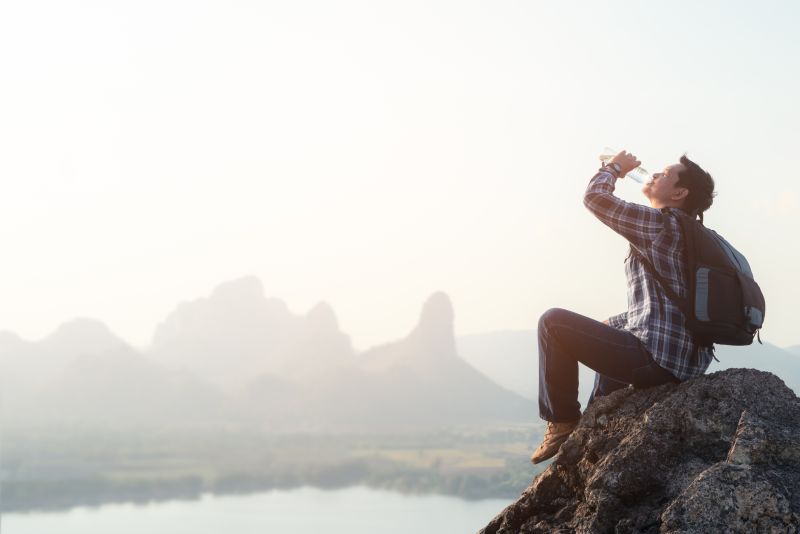1. Energy bars
Energy bars are those tasty little slabs with a mix of carbohydrates, proteins and fats that provide a quick fix of energy.
Most energy bars contain oats or cereal along with a sweetener like honey. Many also have dried fruits, seeds and a base or coating of chocolate or yoghurt.
Carbs for the win
You need more carbs than usual when trekking, especially when trekking at high altitude. So even if you're someone who usually keeps things keto-ish, consider packing some energy bars with some complex carbs in them like oats.
Top tip
Never pack a snack that you think you should want. Yes, hunger makes food taste better. But you should only bring snacks that you know you'll actually be excited to eat when trekking!
We're talking here about the kinds of energy bars that make you so happy you look like you're in an aspirational ad when you eat one ...
So try out different protein bars before the trek to see which you like.
And if you're going on a trek that lasts many days, pack more than one type so you don't grow bored.
2. Protein bars
Protein bars are a little different from energy bars. As the name suggests, the primary nutrient in them is protein. This makes them denser than energy bars. But similar to energy bars, they often have a chocolate or yoghurt coating.
Consider packing more than one protein bar for each day if you're unsure you'll get the amount of protein you need at mealtimes. For instance, you might need to supplement your protein intake if you're a vegetarian or vegan travelling in a country where those sorts of diets are uncommon.
Vegetarian and vegan trekkers in particular should carry a good stash of protein bars for their adventure.
Protein for the win
If you don't have enough protein in your diet on a trek, your body will start to break down muscle tissue. Not good.
Also, protein is good for muscle recovery, so don't be scared to nosh a protein bar even if you're near the end of a day of trekking.
3. Fruits
Fruits are a great source of sugar and fibre on a trek.
Consider packing all or some of the following:
- Dried fruits like raisins, dates, apricots, mango strips and prunes. *
- Fresh whole fruits like apples, mandarins and oranges. **
- Fruit rolls.
- Fruit juices (but only if you've a tendency towards low blood sugar).
* Prunes are an especially good option when trekking in a different country because your changed diet might affect your regularity, and prunes help to flush the digestive system.
* Fruits with a peel-able skin like mandarins and oranges are great as they tend to be relatively hardy and also don't need washing before you eat them.
Fruit for the win
Fruit is a great snack for trekkers because its natural sugars provide an energy boost while the fibre helps to counteract spikes in blood sugar, resulting in a more sustained energy release.
Fruit juices, on the other hand, should only be used by those with low blood sugar levels as they will spike your blood sugar level. The same goes for fruit rolls covered in sugar.
Top tip
Of course some fruit is quite heavy and you might have to limit yourself to only having fresh fruits on the first few days of the trek if you're heading somewhere where you can't get more along the way.
That said, you could consider eliminating something else from your luggage to allow you to pack more fresh fruit. Our Head of Visual Content, Brendan, said that when he trekked to Everest Base Camp he would've given an eye tooth for fresh fruit! Or only pack lightweight fruits like little tangerines.
Note that your taste buds usually become 'cleaner' when you're working out hard, making you crave fruit more than usual.
4. Sweets
Small sweets that you can chew on or suck are great sources of instant energy.
In fact, it's hard to understate the physiological and mental boosts that can come from popping a sugary little something into your mouth at that critical moment!
Of course we're not suggesting that you eat too much refined sugar on a trek. But the odd but here and there can be really useful.
Just be sure to bring individually wrapped sweets if you're trekking in a hot climate where they could end up getting stuck together. We also find that the juicier the sweet, the better.
Sugar for the win
Sugar offers an almost immediate release of energy. This is really useful for endurance activities like trekking. While they can't be all that powers you, listen to your body (especially later in the day) to detect when it needs that instant little boost that will help you to just keep trekking, Dory-style.
Top tip
Want to make friends on your trek? A great first step is to pass around a bag of sweets – there will always be someone who is super grateful for the generosity. It can even be an ice breaker with a stranger who's taking a rest on the trail alongside you!
5. Jerky, salted nuts or trail mix
Your body needs more salt than usual when trekking, so be sure to pack some salty snacks for your trek.
That said, potato crisps are not the answer as the grease and additives won't do you any favours. Instead, consider some healthier salty snacks like:
- Plain or salted nuts.
- Healthy trail mix.
- Pretzels.
- Bitesize crackers.
- Popcorn.
- Beef jerky or similar.
Salt for the win
Your body can't function without salt, and we lose a lot of salt through sweating. So salty snacks are important to prevent you from bottoming out on a trek.
Top tip
Please note that you shouldn't overdo the salty snacks, as too much salt is dehydrating.
So try to eat just a little of the salty snack when you need it and then take a small break before eating any further to give your body time to tell you if it really needs more.
Also try to keep the flavouring on the snack to a minimum. We all know how moreish certain salty foods when they're laced in lab-produced flavours that aim to make you keep eating. So if you tend to overdo the salty snacks, it might be better to opt for those that just have added salt, like plain salted nuts.
6. Your favourite snack
When the going gets really tough on a trek because your mental and physical reserves are super low, it's invaluable to have that one snack that always makes you happy.
We're talking here about that personal favourite that makes you happy just to think about it, let alone eat it! Even if the treat is a little less healthy than you'd usually eat, you're being super active to the point that your body is going to metabolise the heck outta that food.
Top tip
The following snacks don't deserve a space in your limited luggage:
- Snacks that crumble easily, like some biscuits (cookies).
- Snacks that melt easily and will then be a messy mission to eat.
- Foods that bruise easily, like ripe bananas and peaches.
- Snacks that line your throat (like drinking yoghurt).
Finally, note that you don't want to bring snacks that are hard to store after being partially eaten. Rather buy or pack smaller portions. Or be sure to come prepared with some sort of storage system like a resealable plastic bag.
Fun fact
Did you know that chewing is a powerful stress relief?
The jaw is a big muscle and crunching or chewing helps your body to work through stress. While we trek when on holiday, that doesn't mean there aren't moments or even days when we're feeling somewhat stressed!
7. Electrolyte sachets
While we wouldn't exactly call this a snack if we're being fussy about terminology, electrolyte sachets are an important part of any trekker's snack pack.
Electrolyte sachets contain a powder that you add to your water bottle. They contain some important nutrients (like sodium chloride) which you lose through sweating.
Note that these sachets are called various things on the market, like flavour sachets, rehydration mixes and endurance energy powders. And of course they can vary widely in composition. What you want to look for are sachets that contain electrolytes and carbohydrates as these are what help to sustain you when trekking.
Drink your electrolyte-infused water whenever you feel like it, but especially if you start experiencing excessive thirst. In such moments your body is telling you that it's lacking important electrolytes like sodium chloride. If you just keep drinking plain water you're going to crash hard.
Top tip
You can buy electrolyte solutions with or without flavourants. Flavourants can be useful if you're going to need to use purification tablets in your water as many folks don't like how the tablets alter the taste of the water.
We also suggest that you put your electrolyte sachet into your water bottle and keep the water that's in your hydration bladder plain. You don't want to only drink flavoured water. Moreover, this makes it easier to clean your water bladder.
And then you have it! If you pack these seven types of snacks you're going to set yourself up well for success on your next trek.
